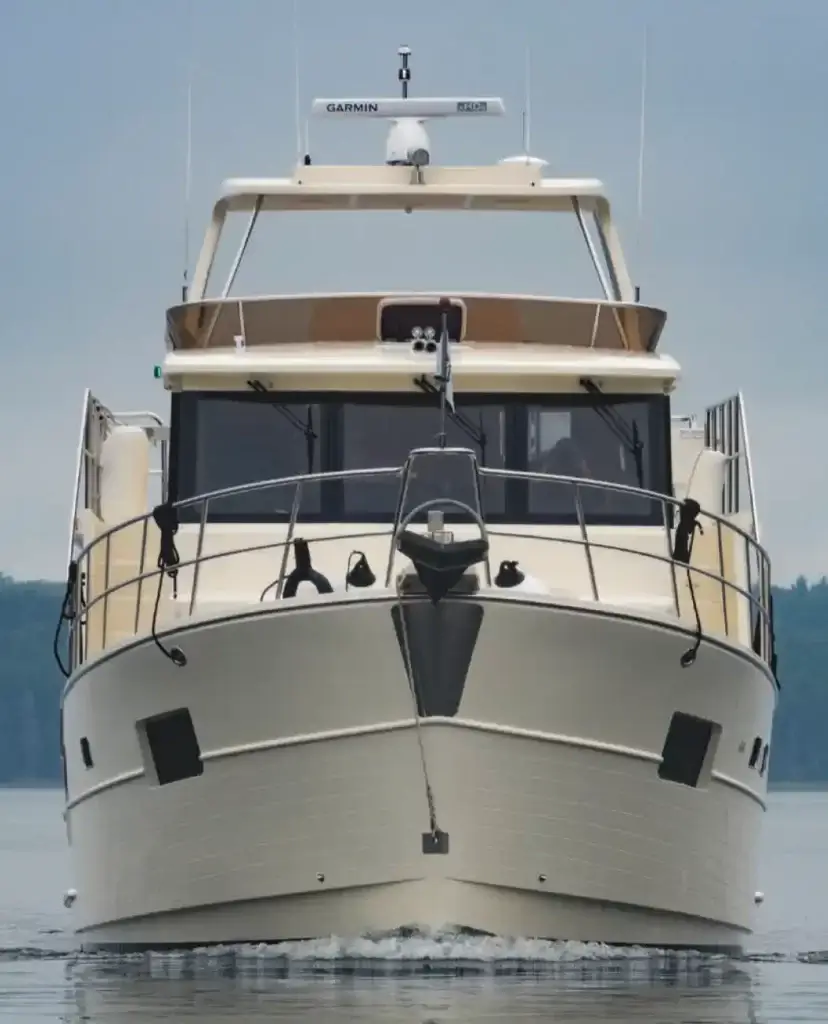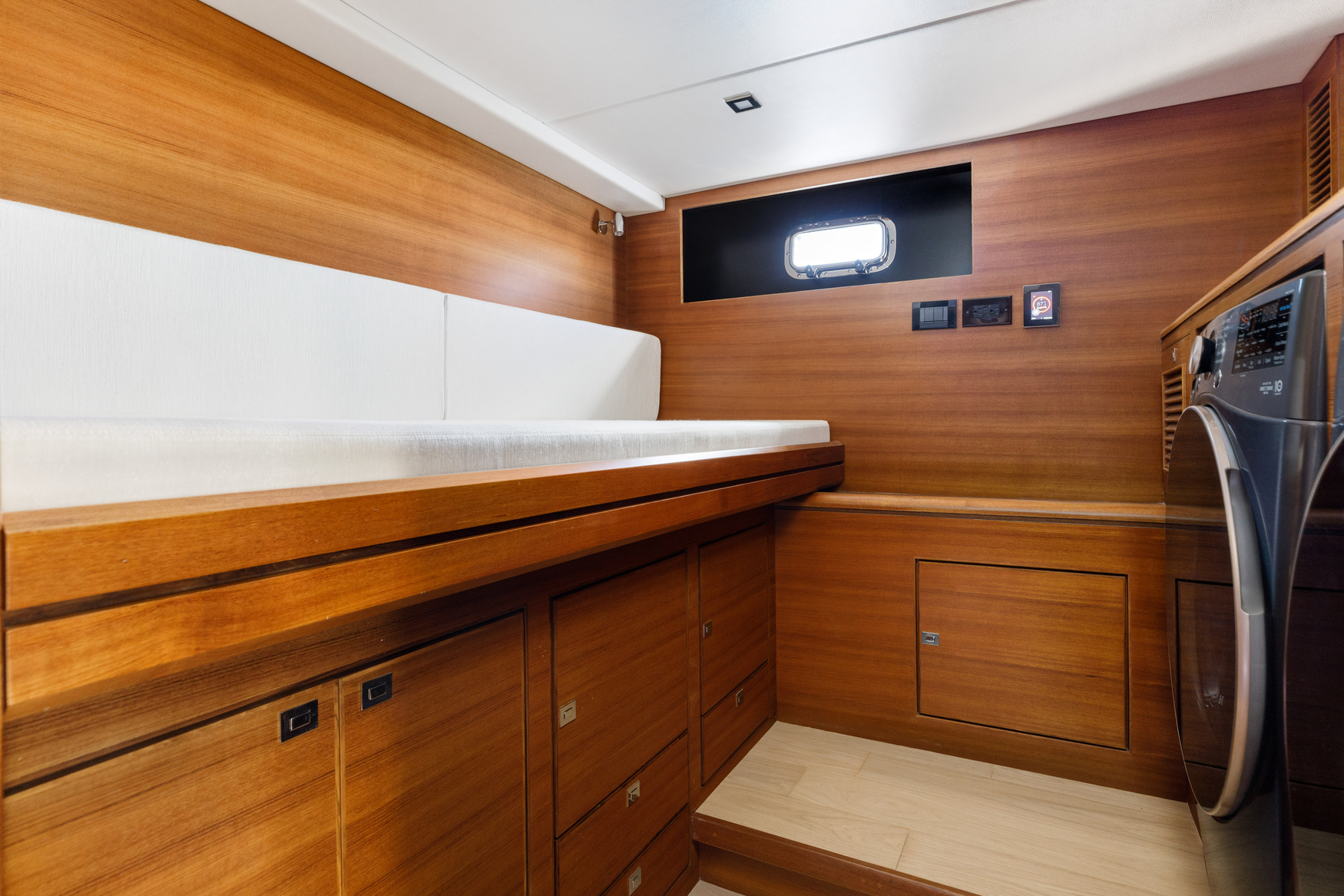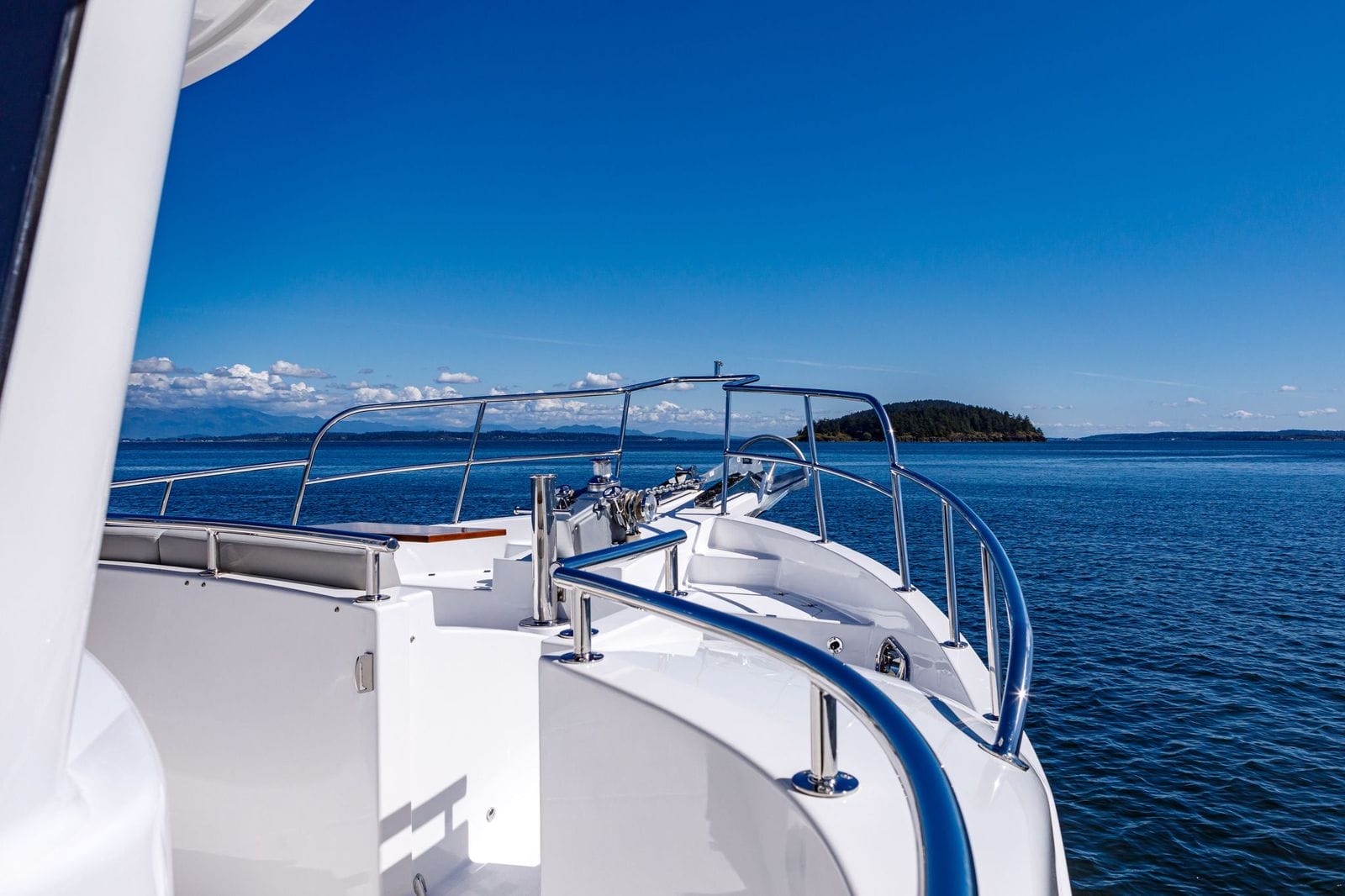Yes, it’s legal to build your own yacht in most countries, including the U.S. and Canada, as long as you follow applicable maritime safety and registration regulations. If the yacht is for personal use, you’re typically not subject to the same stringent requirements as commercial builders, but there are still important legal steps to follow. For example, most states require that a homebuilt yacht be registered, and if it’s over a certain size—usually five net tons—you may need to document it through the U.S. Coast Guard. Builders must also assign a Hull Identification Number (HIN), and in some cases, a certified marine surveyor may be required to inspect the vessel before it’s considered seaworthy or insurable.
That said, building your own yacht is far from simple. Zoning laws can limit where construction takes place, and sourcing marine-grade materials can be challenging without commercial vendor relationships. If you plan to export, charter, or eventually sell the yacht, you may need to meet CE, ABYC, or ISO standards depending on the destination. And when it comes to insurance, many carriers require a complete build log, technical schematics, and a third-party inspection before offering coverage. From our side, we’ve seen how quickly an owner-builder project can become overwhelming without proper planning—and why some opt to work with professional yards on partial builds or fit-outs to strike a balance between personal involvement and compliance peace of mind.

Legality of Building a Yacht for Personal Use
Is It Legal to Build a Yacht in Your Own Country?
Building your own yacht is legal in many countries, including the United States, Canada, and across much of the European Union. In the U.S., for example, federal and state laws allow individuals to construct their own vessels for personal recreational use, as long as the yacht meets basic registration and safety requirements. However, there may be restrictions depending on the size of the vessel, its intended propulsion system, and where the construction is taking place—especially in residential areas. When building a large yacht in a non-commercial zone, local ordinances may limit activities due to structural, noise, or safety considerations.
The most important legal distinction is whether the vessel is for private recreational use or intended for commercial purposes such as charter or resale. Personal builds typically have more relaxed compliance requirements than commercial vessels. However, once a private yacht is used for any commercial activity—or if it’s sold within a certain timeframe—it may be reclassified as a commercial product and become subject to stricter safety, documentation, and liability standards.
Key Legal Distinctions: Private Use vs. Commercial Use
Private yacht construction is generally regulated less strictly than commercial builds, which are held to international standards like SOLAS, MCA, or class society oversight. If you’re building your own yacht strictly for personal recreation and not planning to charter it or operate it for hire, you avoid many of the legal hurdles faced by commercial builders. That said, if your build gains attention or is sold soon after completion, it can be flagged by authorities as a commercial product. This may trigger compliance issues retroactively.
Chartering a homebuilt yacht requires additional inspections, insurance, and licensing, as does using it for organized tours or rentals. Even if your build starts as a personal project, turning it into a revenue-generating asset changes its regulatory classification.
Local and Regional Regulations That May Apply
Where you build the yacht can introduce additional layers of legal oversight. Some municipalities require construction permits for large-scale builds, especially if they occur on residential property. Noise ordinances, material storage regulations, and waste management protocols can all affect your ability to build at home. Zoning restrictions may prohibit vessel assembly in non-industrial zones.
For waterfront or coastal properties, additional permits may be needed for hull assembly or launch. In environmentally protected areas, compliance with wetland or coastal regulations is essential. Even if your yacht will be trailered or transported later, the location of your build may impact your legal responsibilities.
Compliance and Certification Requirements
Registration and Documentation Requirements
In the U.S., any yacht over five net tons used in navigable waters is eligible for Coast Guard documentation, though it’s not strictly required unless traveling internationally or planning to flag the vessel commercially. State registration is mandatory in most jurisdictions, even for homebuilt yachts. States may assign Hull Identification Numbers (HINs) after verifying the build is complete and safe for operation.
Federal documentation offers advantages, including easier financing, broader cruising rights, and streamlined entry into foreign ports. However, it also comes with inspection and record-keeping requirements.
Meeting Safety and Construction Standards
While homebuilt yachts aren’t always required to follow formal standards like those set by the ABYC or CE, adherence to these guidelines ensures your build meets accepted safety practices and helps when insuring or reselling the vessel. For international cruising, compliance with ISO or CE construction standards may be needed for port clearance or resale eligibility.
If the yacht is ever exported, flagged under a foreign registry, or repurposed for commercial use, failure to meet these standards could delay registration or reduce market value. Builders planning to cross borders or enter charter markets should align their designs with recognized international compliance frameworks.
Inspection and Survey Considerations
In most jurisdictions, a homebuilt yacht must pass a basic inspection before it can be registered or insured. Some owners use self-certification routes, while others hire marine surveyors to validate the build. Insurance companies generally prefer (or require) a third-party survey to establish insurability and value.
Survey requirements include hull integrity, flotation, bilge systems, electrical and fuel safety, and access to emergency equipment. This applies whether you’re launching in a marina, storing on a trailer, or preparing for long-distance cruising.
Materials, Build Location, and Permitting
Where You’re Allowed to Build a Yacht
Building a yacht at home may sound simple, but the build location matters legally and logistically. Residential zones often limit the size or duration of construction projects. Homeowners associations (HOAs) may restrict large projects, especially if they involve scaffolding, heavy machinery, or deliveries of construction materials.
Some owners lease industrial shop space, work with marinas offering build support, or partner with smaller yards on hull fabrication before completing the fit-out on their own property. The best location balances cost, legal compliance, and access to materials and expertise.
Sourcing Materials for a Private Yacht Build
One of the most overlooked challenges in self-building is sourcing high-quality, marine-grade materials. Fiberglass resins, epoxies, aluminum plate, or composite panels often aren’t sold directly to consumers—or may come with limited technical support or warranty coverage. Using non-certified components may affect insurance eligibility or resale later.
Traceability becomes an issue for resale or documentation. Without records of where key materials came from, or how they were installed, surveyors and buyers may flag the yacht as uninsurable or ineligible for certain registries.
Construction Permits and Environmental Compliance
Depending on the build location, you may need a construction permit before laying a keel or assembling hull molds. Permits often cover noise control, stormwater runoff, and material containment. Improper handling of solvents, fiberglass dust, or wastewater can violate local environmental laws—especially in coastal or watershed areas.
Even a backyard project may require inspection or permitting, particularly if it involves a structure like a tent, enclosure, or launch ramp. Early conversations with local building and zoning offices can save time and legal risk later on.

Exporting, Selling, or Registering a Homebuilt Yacht
Can You Sell a Homebuilt Yacht Legally?
Yes, it is legal to sell a homebuilt yacht, but there are key requirements that must be satisfied before it changes ownership. To legally resell a yacht built for personal use, the vessel typically needs to be registered with a state or flag authority and titled, if applicable. The builder—now acting as the seller—should have documented the construction process thoroughly, including build logs, receipts for materials, hull identification information, and any inspection results.
In many regions, a yacht built for private use may still be classified as a recreational vessel during resale, provided it wasn’t used commercially. However, if the vessel is perceived to be produced for profit or lacks compliance documentation, it may be treated as a manufactured product, subject to additional liability or certification standards. The more complete your documentation, the smoother the resale process will be.
Export Regulations for Homebuilt Yachts
Exporting a homebuilt yacht introduces another level of legal responsibility. Customs paperwork, proof of ownership, and compliance documentation will be required. Some countries will not allow the import of a yacht unless it meets CE, ISO, or local regulatory standards, even if the vessel is otherwise seaworthy. Any deficiencies in emissions controls, electrical systems, or labeling may prevent the yacht from being registered abroad.
In some cases, export or reflagging can void insurance policies or cause classification society approvals to lapse if they weren’t recognized by the new flag state. It’s crucial to work with a marine attorney or international broker if planning to export or sell internationally.
Transferring Ownership and Proving Compliance
Buyers of homebuilt yachts typically want evidence of compliance and quality before finalizing a purchase. That includes formal registration, a valid title or bill of sale, and a complete history of inspections or surveys. If the vessel hasn’t been surveyed, it may need to be inspected before the buyer can register or insure it.
You may also be asked to provide wiring diagrams, tank schematics, and stability calculations, particularly on larger vessels. Incomplete or informal documentation can lower the resale value and complicate the transfer of ownership, especially for buyers seeking insurance or operating licenses.
Liability, Insurance, and Operational Considerations
Insurance for Self-Built Yachts
Getting insurance for a homebuilt yacht can be more difficult than for a factory-built model. Underwriters typically require a recent survey from a qualified marine surveyor, along with full documentation of the build. They may ask for specifications on hull layup, systems installation, and equipment.
Some policies offer hull-only coverage during construction, with full-use coverage activated after launch and inspection. Others exclude certain systems or uses until verification is complete. Owners should secure coverage before launch to protect against liability and material loss.
Legal Liability and Builder Responsibility
If a homebuilt yacht causes damage or injury due to faulty construction, the builder—whether a private individual or a company—may be held liable. Even if sold, the original builder could be subject to legal claims if negligence can be proven.
To reduce exposure, it’s important to disclose the vessel’s homebuilt status during resale, include proper language in the bill of sale, and obtain a release of liability. Having a third-party survey completed prior to sale also adds a layer of protection and shows good faith.
Licensing and Operation Post-Construction
After construction, operating a homebuilt yacht involves similar steps to any new vessel. Larger yachts may require operator licensing depending on the flag state or country of operation. For instance, certain nations require captain’s licenses above specific size thresholds or for offshore travel.
VHF radios, radar systems, and AIS transponders may also need to be registered or licensed with maritime authorities. If you choose to flag the yacht internationally, make sure the build complies with that registry’s standards. Some flag states are more lenient for homebuilt vessels, while others maintain strict inspection and safety requirements.
Pros, Pitfalls, and Alternatives to Building a Yacht Yourself
Advantages of Building Your Own Yacht
One of the biggest appeals of building your own yacht is the ability to control every element of design—from hull shape to cabinetry layout. It allows for a deeply personalized vessel and, in some cases, significant labor cost savings. The hands-on experience also creates a deeper understanding of every onboard system, which can be valuable for long-term maintenance and troubleshooting.
Many builders take pride in crafting a yacht that reflects their vision, and the satisfaction of launching a self-built vessel can be unmatched.
Common Pitfalls in DIY Yacht Construction
The most common pitfalls include underestimating the time, budget, and complexity of a yacht build. Delays are common, and mistakes in structural or systems installation can lead to costly rework or safety concerns. Another challenge is documentation—many homebuilders forget to keep thorough records, which are essential for resale, insurance, and registration.
Warranty and tech support can also be limited when using non-OEM or salvaged parts, which may not meet modern compliance or safety standards.
Alternative Approaches for Owner-Involved Builds
For those who want to be involved without taking on the full project, there are hybrid solutions. Some owners commission a bare hull and deck structure from a custom yard, then complete the interior fit-out themselves. Others work alongside a builder on a partial-DIY basis, choosing materials, layouts, and finishes while leaving technical systems to professionals.
Semi-custom yacht platforms also offer a middle ground—allowing for layout changes and finish selection within a proven engineering framework. This route gives owners creative control while ensuring structural and regulatory compliance from the start.

Contact Us
At North Pacific Yachts, we’re here to make your journey to owning the perfect yacht seamless and enjoyable. Whether you’re looking for expert guidance on model specifications, insights into custom build options, or simply need a few questions answered, our team is ready to assist. With years of experience in yacht building, we’re dedicated to understanding your unique vision and helping you navigate the entire process with ease. Reach out to us by email at info@northpacificyachts.com for personalized responses to all your inquiries.
If you’d prefer a conversation, we invite you to give us a call at 1-877-564-9989. Speaking directly with our experienced team can provide immediate answers and professional insights into everything from specific build features to delivery timelines. At North Pacific Yachts, your satisfaction is our top priority, and we’re here to ensure you’re confident and informed at every step of your yacht ownership journey.


